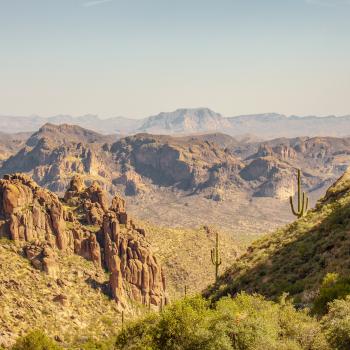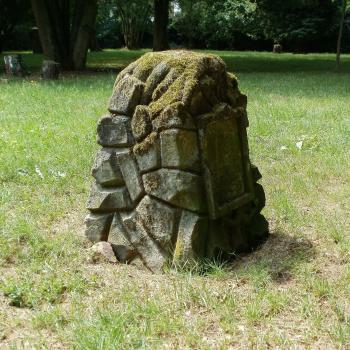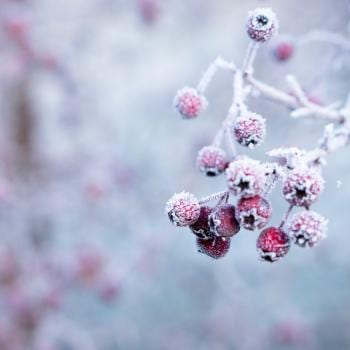Fall – my second favorite time of year, outranked only by Christmastime. (I suspect I’m one of the few Pagans who just adores that time of year.)
With September, we see the beginnings of fall as it is really expressed: gourds, pumpkins, those stunning yellow and orange color schemes, the falling of leaves, the cold scent hinting in the air… These potent expressions of fall will only increase as we go into October and enter into the fun spooky month full of witchy decor, playful horror, and so much candy.
…at least, that’s fall for some of us.
This Is Not the Blog Post You Promised!
Why am I starting a post about how your – yes, you, specific dearest reader – favorite Sabbat sucks by talking about…fall? Because I think fall is a great example of how very different our many human experiences of the seasons and the Wheel of the Year depends entirely on where we live.
Where I grew up, fall isn’t exactly a season we experience. The temperatures cool, a bit. But beautiful leaves shifting to stunning oranges and yellows and reds? I did not see a sight like that until I was an adult. A desert environment does not lend itself to such showy displays.
Far more notable than the muted fall months was the monsoon that swept through during the ‘summer’. (Monsoons are, technically, their own season.) Stunning in its intensity. Awful in its muggy heat. Destructive in the downpours the clouds would release. The monsoons of my hometown bring a nostalgic smile to my face (and gave rise to an Otherfaith holy month).
These monsoons – powerful rain and thunderstorms vital to the continuation of life in the desert but also violently destructive – can continue into September. But for me, I associate them most strongly with late July and August.
Because of this lived experience, many of the Sabbats written about in Wiccan and witchcraft books resonated little if at all. I don’t think I quite grasped the harvest aspect of Lammas (August 1) until moving to an area where the harvest was clearly happening at that time. Part of my disconnect was because I lived in an urban environment, but it was also because the themes of the Sabbats did not align with the actual land I was living on.
Your Favorite Sabbat Definitely Sucks…Somewhere
Around every upcoming Sabbat I see a post pop up about how the approaching holy day actually isn’t that great, or isn’t exciting, or some such.
I don’t think these posts are bad. They serve an important purpose. They help people who don’t resonate with a specific Sabbat know they aren’t alone in disliking it, often articulating why we don’t like this or that aspect of the holiday. And they give people who do like the Sabbat an opportunity to reflect on ideas they might not otherwise consider.
So don’t take this article to mean ‘stop writing those sorts of essays!’ Absolutely not. Keep writing them!
I simply want to point out that…all the Sabbats can be underwhelming or crappy, depending on where you live.
Locale and Localization
My least favorite Sabbat, growing up in Arizona, was Midsummer (also called Litha). I hated it, and I still hate it if I am being honest. The peak of the sun’s power? That is a terrible thing when you live in a desert region.
I adored Samhain for its connection to both Halloween and the local Day of the Dead festivities that took place where I lived. The weather had cooled enough at that point in the year that one could go out in the daytime without feeling like you had stepped into an oven. the winter would soon arrive and bring with it the calmer, softer rains and the lovely temperate temperatures.
Truthfully, the rest of the Sabbats never found places in my heart when I was living in Arizona. (Some people, I should note, love living where I did and connect with the flow of the seasons. I’m just not a fan of heat and summer, so a place where that is the dominant energy? Eternal suffering for me.) Christmas and Yuletide became my favorites because of their communal associations as well as the nicer weather.
So growing up, reading about how great this or that Sabbat was, how awful this or the other one was…my thought was always, ‘Don’t they all kind of suck though?’
This was alleviated slightly when I really focused on honoring the world around me. Arizona might not have seasons as described in most Wiccan and Pagan 101 books, but there was a seasonal flow to be found if one paid attention. The blooming of the mesquites, overwhelming in their yellow flowers. The palo verdes as well. They would stain the streets with their blossoms. The crunching of the seed pods after they had fallen off the trees, the smell of dirt before the rain… All of these make up the actual ‘Wheel of the Year’ for where I lived.
This is a sadly under-explored topic within our Pagan spheres. For so many books that recommend getting ‘in touch’ with nature, most of them just spit out the same European climate (and plant) associations as if they’re universal. (Adapting the Wheel to one’s local area is explored in this article in Llewellyn’s…)
You Can’t Universalize
When we try to extrapolate from our local area or personal experiences to the whole world – full of different climates, different habitats, different times of planting and harvesting – we run into problems. Immediately.
The reason most Pagan and Wiccan books didn’t connect with me when it came to the Wheel of the Year was because they were rooted in a climate completely different from my own. Now that I am living in Europe all of that poetry and prayer and writing resonates. Yet it is still expressed in a thousand different unique ways local to where I live.
The Autumn Equinox wasn’t really anything special when I lived in Arizona. Now, it has a precious importance to me based upon the scent in the air, the color of the trees, the shifting leaves of the plants surrounding my house. The later dawn, the earlier dusk, the oppressive near-frightening darkness of night… These are all things founded in my experience of the space I am inhabiting.
Even my favorite Sabbats and holidays have taken on newer, nuanced meaning in light of living in a different area. Did I truly understand the despairing longing for light of the winter months until being in an area where winter was oppressive? I would say no. Now my understanding of Yule and wintertime holidays has been expanded.
If it were possible, I might perhaps bottle these sensations of season and store them, ready always to be uncorked that I might share them with another. So that we might understand this flow of time as it is in this broad world. And what a wondrous world we live in that I can learn and read and, in some fashion, understand that flow of time as it occurs in places far away from myself.
The Sabbats and holy days and festivals we love, the ones we hate – they express the varied experience not only of humanity but the lands we are so intimately tied to.
But there is no universal experience of the Sabbats. There shouldn’t be.
















